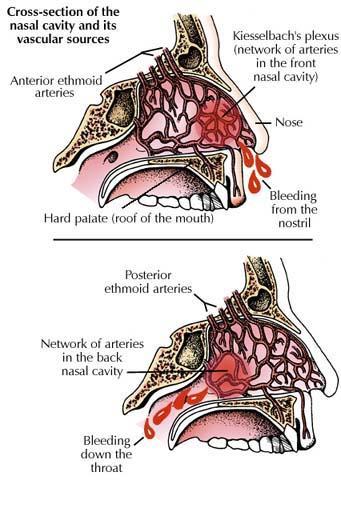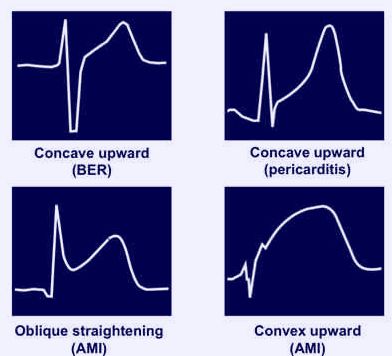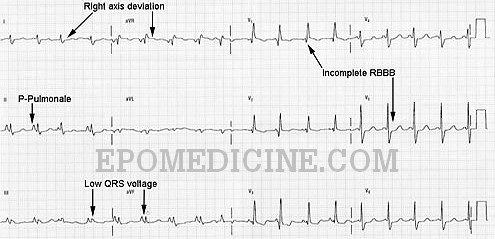Optic disc changes in Glaucoma is one of the most frequently asked topics in Ophthalmology. However, students are often found to have difficulty in understanding and remembering them. Hence, I came up with an idea to illustrate them with schematic diagrams and mnemonics to simplify the topic. The diagrams are…
Category: PGMEE, MRCS, USMLE, MBBS, MD/MS
Medical knowledge in bullet points with understandable language, simplified images and graspable mnemonics.

Epistaxis Basics : Anatomy, Physiology and Pathology
Synonyms: Nosebleed, Nasal bleeding Definition: Epistaxis is defined as bleeding from the nasal cavity. It ranges from minor blood-tinged mucus when blowing the nose to life-threatening hemorrhage. Epidemiology: Age: Bimodal distribution – common in <10 years and >60 years Season: Winter Anatomy and Physiology: Why is the nose prone to…

ECG changes in Pericarditis
Synonyms: Acute pericarditis, Viral pericarditis, Infectious pericarditis Definition: Diffuse inflammation of the pericardial lining surrounding the heart and characterized by sharp pleuritic, retrosternal chest pain worsened with recumbency and relieved by leaning forwards. Causes of Pericarditis: a. Infectious: Viral: Coxsackievirus, Echovirus, Ebstein-Barr virus, Influenza, HIV, Mumps virus Bacterial: Staphylococcus, Hemophilus,…

ECG changes in Chronic Obstructive Pulmonary Disease (COPD)
Synonyms: Emphysema, Chronic bronchitis, Chronic Obstructive Lung Disease (COLD), Chronic Obstructive Airway Disease (COAD), Smoker’s lung Definition: COPD is a lung disease characterized by airflow limitation (FEV1/FVC ratio of less than 70%) that is not fully reversible (FEV1 increase of 200 ml and 12% improvement above baseline FEV1 following administration of…
Acute Dacryocystitis : Clinical review
Definition: Acute dacryocystitis is the inflammation of the lacrimal sac which usually occurs in very young children or > 40 years Microbiology of Acute Dacryocystitis: Congenital: Hemophilus influenzae (acute – rare), Others (chronic) Adults: Acute: Staphylococcus aureus, Beta-hemolytic streptococci Chronic: Streptococcus pneumoniae, Candida albicans Etiology of Acute Dacryocystitis: 1. Congenital:…
Ophthalmology Spot Diagnosis: Nodular Episcleritis
This is a case of nodular episcleritis. Definition of Episcleritis: Episcleritis is defined as the benign recurrent inflammation of episclera and tenon’s capsule. Types of Episcleritis: Diffuse episcleritis Nodular episcleritis Epidemiology: Common in females compared to males Common in young adults Etiology: Non-specific immune response to irritants Idiopathic (mostly) Rheumatoid arthritis…
Ophthalmology Spot Diagnosis: Hyphema
Definition: Accumulation of blood in the Anterior Chamber (AC). Causes: a. Post-traumatic: Trauma or surgery b. Spontaneous: Neovascularization Ocular neoplasms Vascular and clotting anomalies (leukemia, hemophilia, aspirin) Grading for Traumatic Hyphema: 0 : No layered blood, circulating RBCs only (Microhyphema) 1: Layered blood filling < 1/3 of AC 2: Layered…
Glaucoma Basics – Aqueous humor dynamics and Intraocular pressure
Volume of aqueous: 0.25 ml (Anterior chamber) + 0.06 ml (Posterior chamber) Composition of aqueous: similar to plasma except- higher concentration of ascorbate, pyruvate and lactate lower concentration of protein, urea and glucose Functions of aqueous: Maintains Intra-ocular Pressure (IOP) Provides nutrition to avascular lens and cornea Optical transparency Place…
